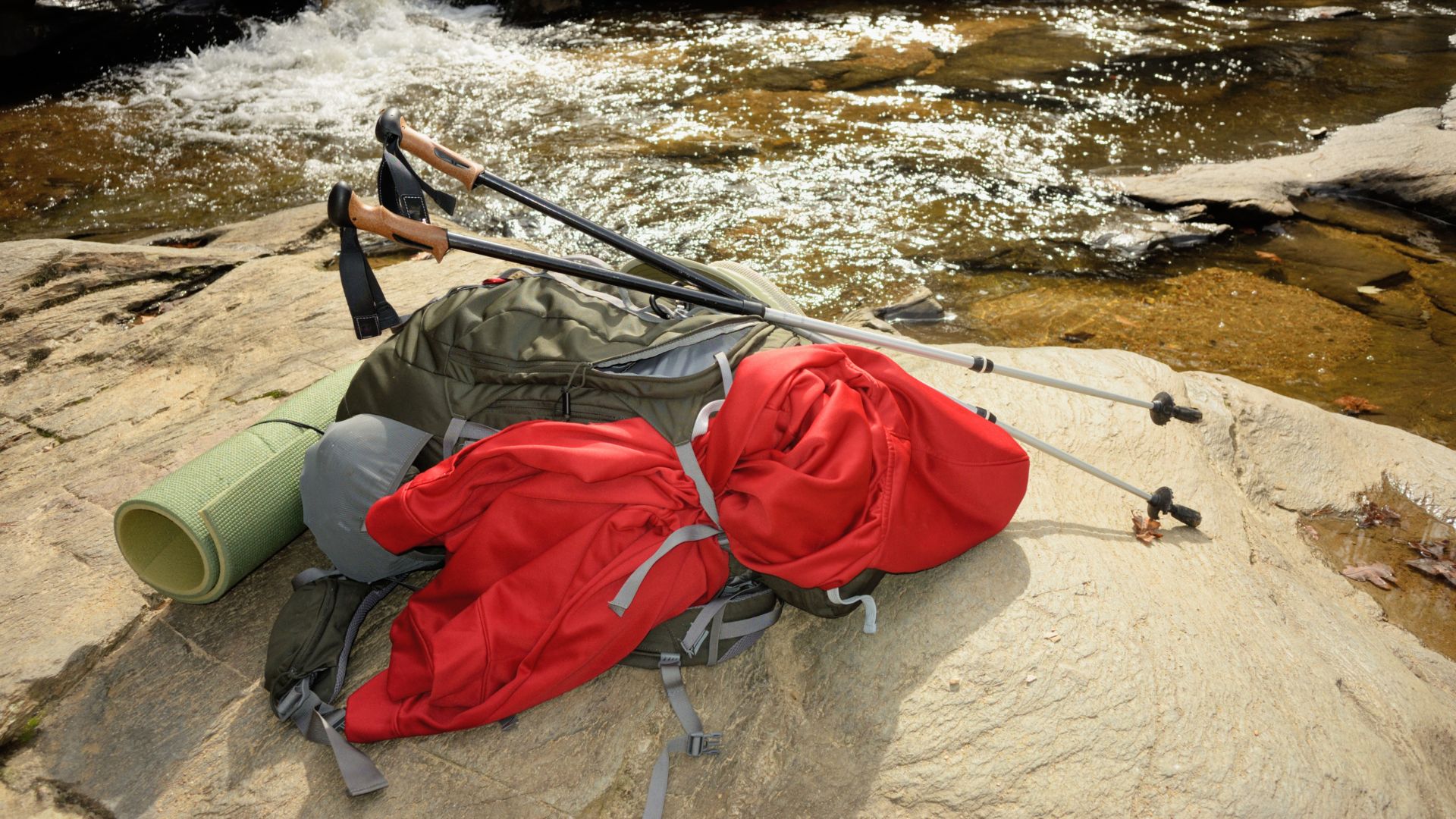Peneda-Gerês National Park is Portugal’s only national park, and honestly, stepping into this wild landscape felt like wandering into a different world. It sits tucked away in the northwest corner of Portugal, where rugged mountains, thick forests, and unbelievably clear rivers stretch as far as you can see.
The sound of waterfalls, the sight of ancient Roman roads, and the rare chance to spot those beautiful Garrano wild horses—these things made every moment feel magical.
I wandered through quiet mountain villages and followed hiking trails that just seemed to go on and on. Every turn brought something new—a hidden lagoon or a view I wasn’t expecting.
There’s nothing quite like swimming in a cool natural pool or catching a glimpse of wildlife just doing their thing. If you’re after a real escape in Portugal—where wildlife, nature, and epic landscapes all come together—Peneda-Gerês is the place.
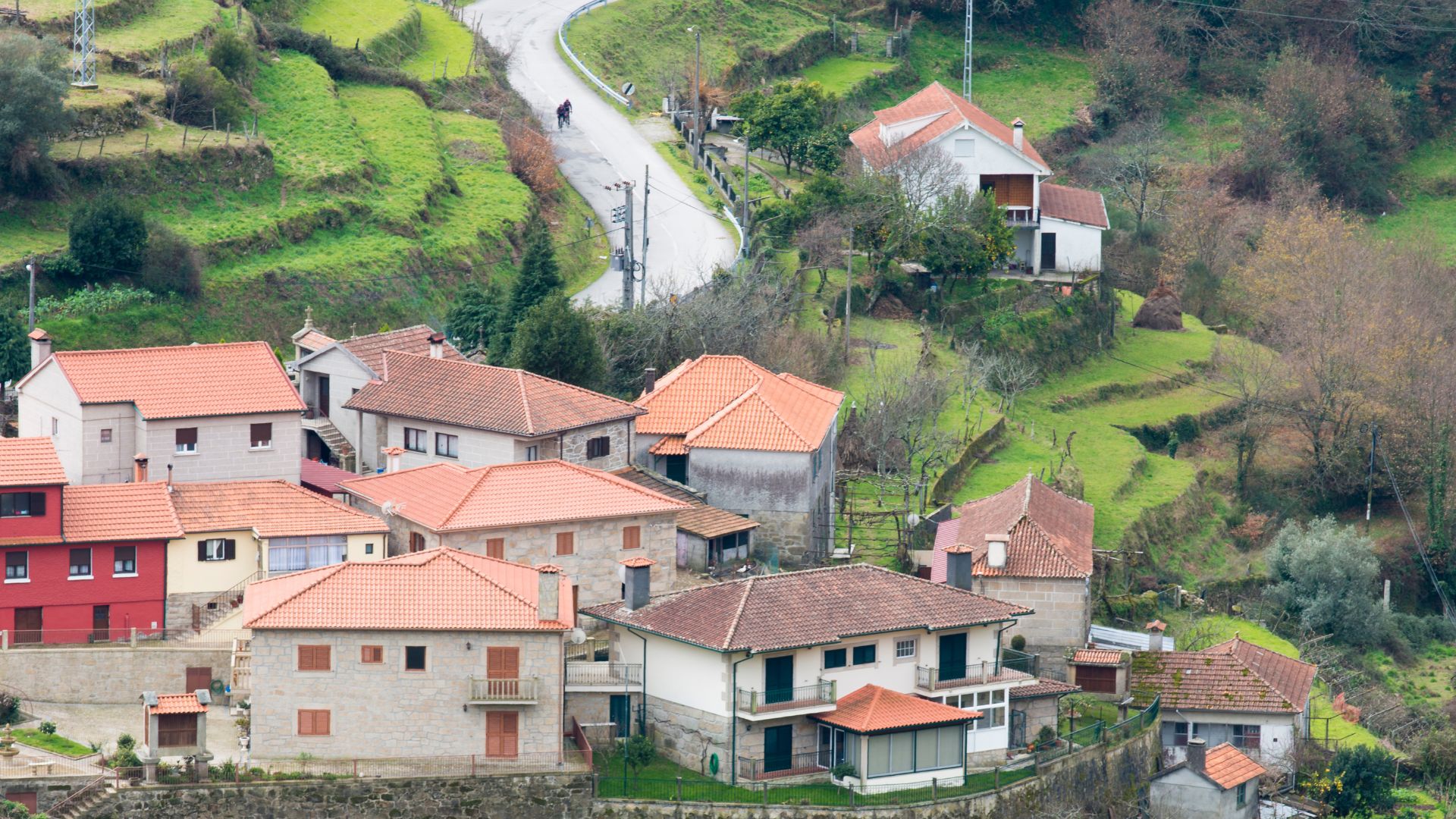
Why Peneda-Gerês National Park Is Portugal’s Unforgettable Wild Escape
Peneda-Gerês National Park sits up in northern Portugal, where untouched landscapes blend with stone villages and old trails. Rare wildlife, jaw-dropping scenery, and hints of history pop up everywhere you look.
Discovering Portugal’s Only National Park
Peneda-Gerês isn’t just any park—it’s the only national park in Portugal, and that gives it a special kind of magic. The park covers more than 70,000 hectares, stretching from the rugged Spanish border to green valleys sprinkled with tiny villages.
On my first visit, I followed winding Roman roads, passing mossy milestones and ancient bridges. Locals smiled and waved as I walked through villages like Lindoso and Soajo, where granite houses cling to the slopes and life seems to move at its own pace.
Some villages inside the park have just a handful of residents. Shepherds guide their flocks beneath the branches of ancient oaks. I lost track of time, wandering between chapels, cobblestone lanes, and rushing waterfalls that almost didn’t seem real.
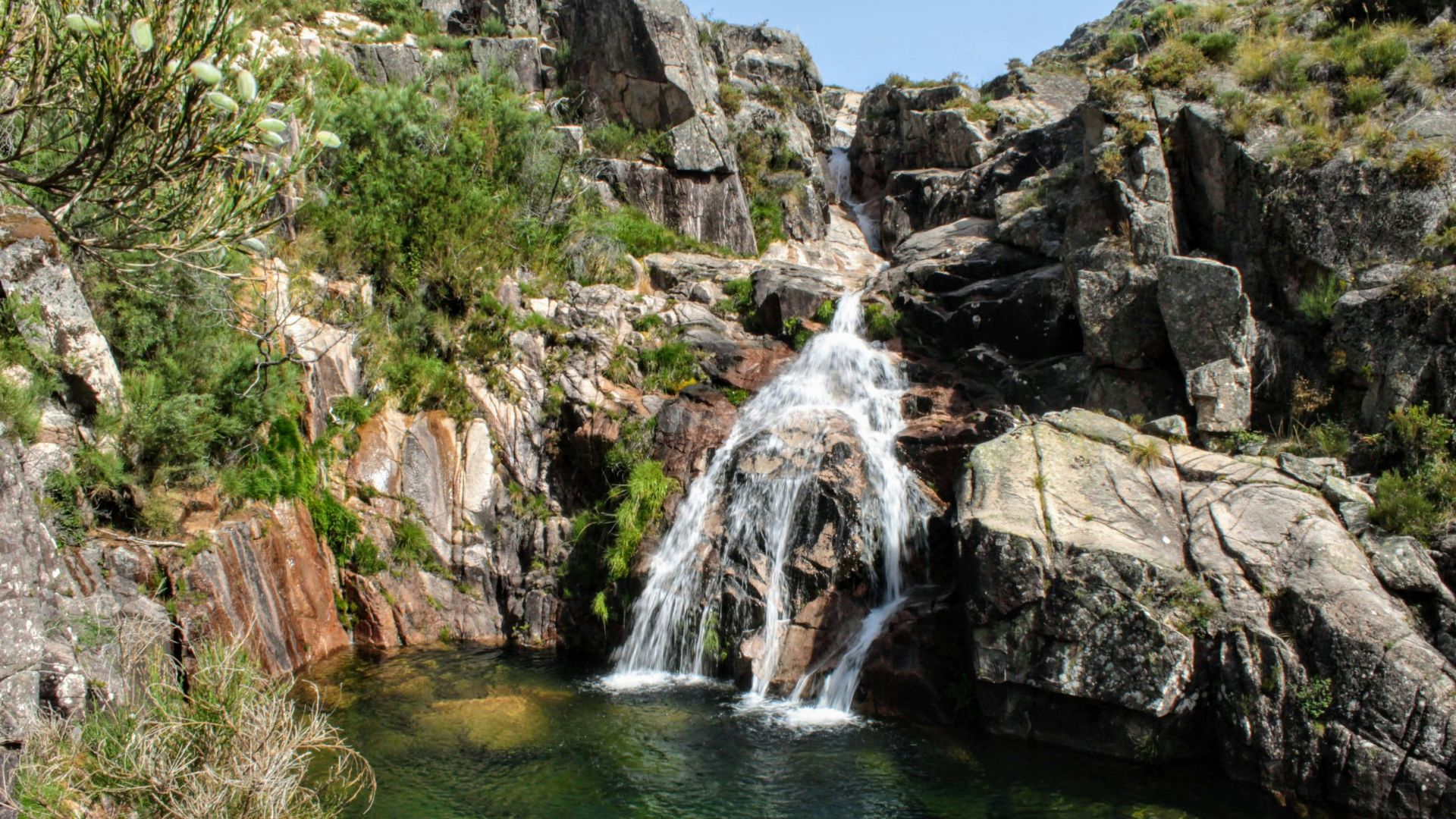
Unique Biodiversity and Endemic Species
If you’re into wildlife, Peneda-Gerês will surprise you. The park protects a wild mix of plants and animals, some you won’t find anywhere else in Portugal.
Tall forests hide otters and roe deer, while wild boars root around in the ferns. One early morning, I finally spotted the famous Garrano wild horses—their manes flying as they grazed in the mist. These small, sturdy horses have roamed these hills for centuries.
Golden eagles soar overhead, and if you’re lucky, you might spot a wolf slipping across a distant ridge. The Gerês lily—a delicate purple flower—grows only here, splashing color across the spring hillsides.
Rare butterflies, ancient yew trees, and the sweet scent of heather make every hike feel like a lesson in wildness.
Seasons and the Best Time to Visit
Choosing when to go can totally change your experience. I’ve visited in spring, when wildflowers explode and streams rush, and in autumn, when the trees turn gold and red.
Spring (March to May) is perfect for waterfalls, wildflowers, and mild weather. Summer brings long days, but it can get hot and crowded, especially in the valleys.
If you want peace and quiet, autumn (September to November) is my favorite. The crowds leave, mornings turn crisp, and the views are just unreal.
Winter is calm, but some trails get muddy or icy, and a few guesthouses close up. No matter the season, bring good boots and a camera—there’s always something wild waiting just around the bend.
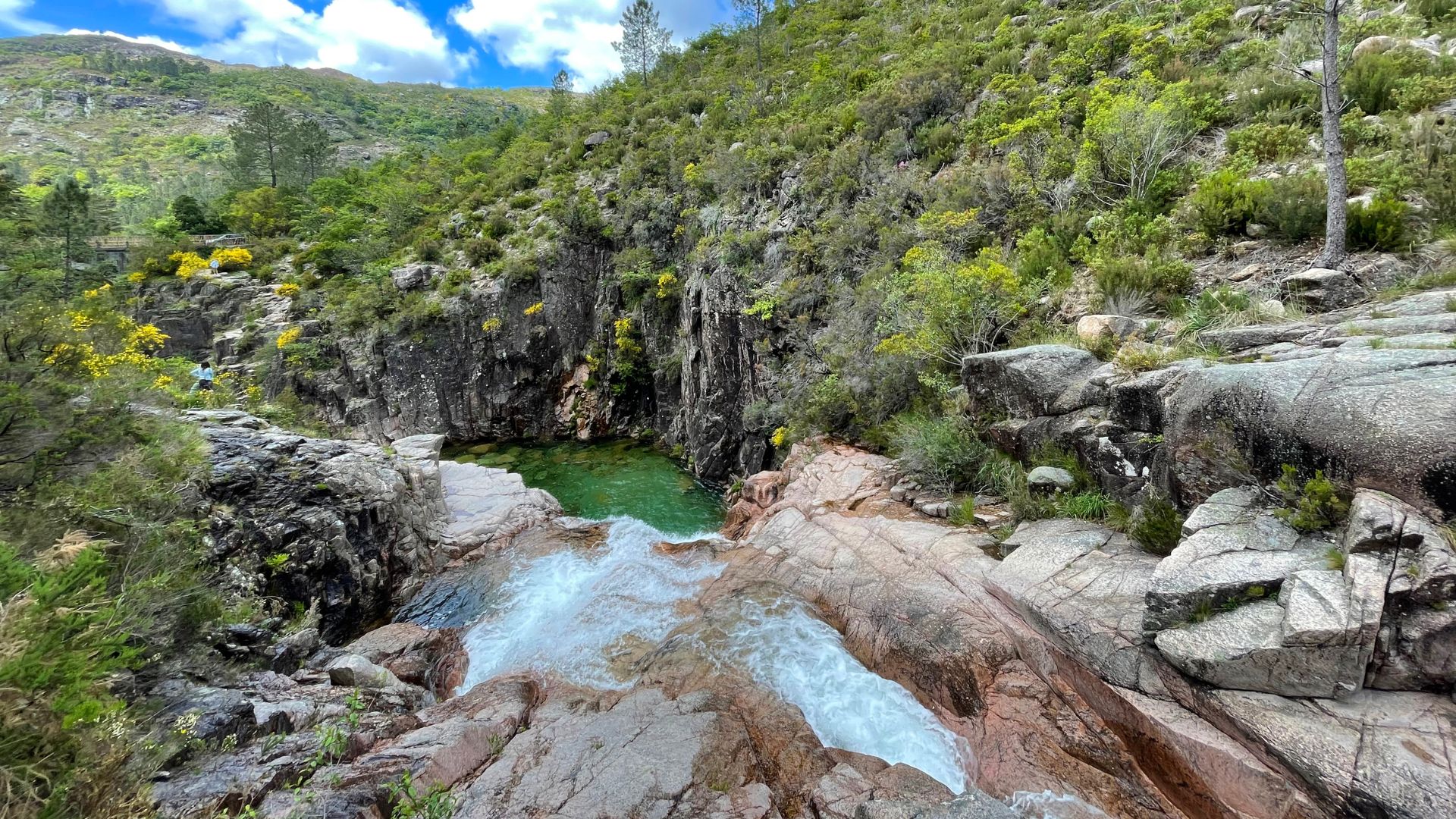
Chasing Waterfalls and Natural Pools: Peneda-Gerês’ Most Breathtaking Spots
Some of Portugal’s best waterfalls and wild swimming spots hide deep in Peneda-Gerês. I found clear lagoons, secret river beaches, and adventure at every turn.
Must-See Waterfalls: Arado, Tahiti, and Cascata Fecha de Barjas
The first waterfall I went after was Cascata do Arado, not far from the village of Ermida. I drove a bit, then walked to a stone viewpoint and watched the water crash into rocky pools below. Early in the morning, it felt like I had the place to myself—just the spray and birdsong for company.
Locals kept telling me about Tahiti Waterfall, but its real name is Cascata Fecha de Barjas. Both locals and travelers love it—the jump into the jade-green pool is the big draw. Signs point you toward “Tahiti,” so it’s not hard to find, but the rocks get super slippery after rain. I took it slow.
Both waterfalls have deep, cool water—perfect for swimming after a hike in the sun. They’re ridiculously photogenic, especially when sunlight filters through the trees.
There’s also Poço Negro, a darker, quieter little cascade with a small pool. I found fewer people here, which was great for a peaceful break.
Secret Natural Pools and Hidden River Beaches
I stumbled on the Poco Azul pool after wandering down a less-traveled path. The water looked impossibly blue—colder than I expected, but refreshing on a hot day. Locals stretched out on big flat rocks nearby.
Here are a few of my favorite swim spots:
| Spot | What I Loved Most | Tips |
|---|---|---|
| Poço Azul | Bright blue water, peaceful vibes | Wear water shoes |
| Poço Negro | Small, shaded pool, fewer people | Mornings are quieter |
| Caniçada Reservoir | Wide beaches and warmer water | Good for groups, kayaks |
Hidden river beaches dot the Vilarinho das Furnas area. Some you can only reach by foot, but the calm water and forest views are worth the walk. I brought a towel and a picnic, which made the swim even better.
Adventure Activities Around Water: Kayaking, Canoeing, and Canyoning
Once I arrived in Peneda-Gerês, I couldn’t resist joining a group for kayaking on the Caniçada Reservoir. The views of the tree-covered hills from the water blew me away, and I even spotted wild horses drinking at the edge.
Canyoning ended up being the wildest thing I tried—sliding down natural rock slides, leaping into hidden pools, and rappelling beside waterfalls like Arado and Portela do Homem. Guided tours usually provide all the gear and safety info.
For something more relaxed, I rented a canoe and paddled along quiet stretches of river. I didn’t need any experience—guides explained everything before we set off.
Along the way, I passed small waterfalls and sandy shores, perfect for a quick rest. Water sports here really add a whole new layer to exploring Gerês—there’s something for everyone.

Hiking Ancient Roman Roads and Scenic Trails
Peneda-Gerês National Park is a hiker’s paradise. I found a landscape shaped by ancient history, wild beauty, and one-of-a-kind viewpoints at every turn.
The Famous Geira (Via Nova) and Milestones
Walking the Geira, or Via Nova, felt like time travel. Roman travelers crossed these stones nearly 2,000 years ago. This ancient road linked Braga (Bracara Augusta) to Astorga in Spain, and several kilometers remain inside the park.
I spotted stone-paved paths and milestone markers (miliarios) that still stand by the roadside. Some cross streams or disappear into oak woods, making history feel close enough to touch.
Hiking a section between Campo do Gerês and the Spanish border is the best way to see the remaining milestones. Roman bridges, like the one in Rio Caldo, make these routes even more exciting.
You can still read engravings on the stones—distances, and the names of Roman emperors who kept this road going. Walking here, I couldn’t help but imagine what it was like centuries ago.
Best Hikes for Every Adventurer
Peneda-Gerês has trails for everyone, from easy strolls to long, tough climbs. My favorite was the 7 Bridges Trail in Mata de Albergaria. It winds through woods, past clear streams, and links up with parts of the historic Roman road.
You can also visit the wild Messe Meadows or climb the granite peaks of Serra Amarela. For an easy or family-friendly walk, try the trilho da Cidade da Calcedónia. It’s short and the views are worth it.
More experienced hikers might go for the Castro Laboreiro trail, which is long and full of wildlife and old stone villages.
Quick list of recommended hikes:
- 7 Bridges Trail: Roman bridges, forest, doable for most.
- Messe Meadows Trail: Wildflowers, remote vibes.
- Castro Laboreiro Route: Long, scenic, with cultural stops.
- Trilho da Cidade da Calcedónia: Shorter, less challenging.
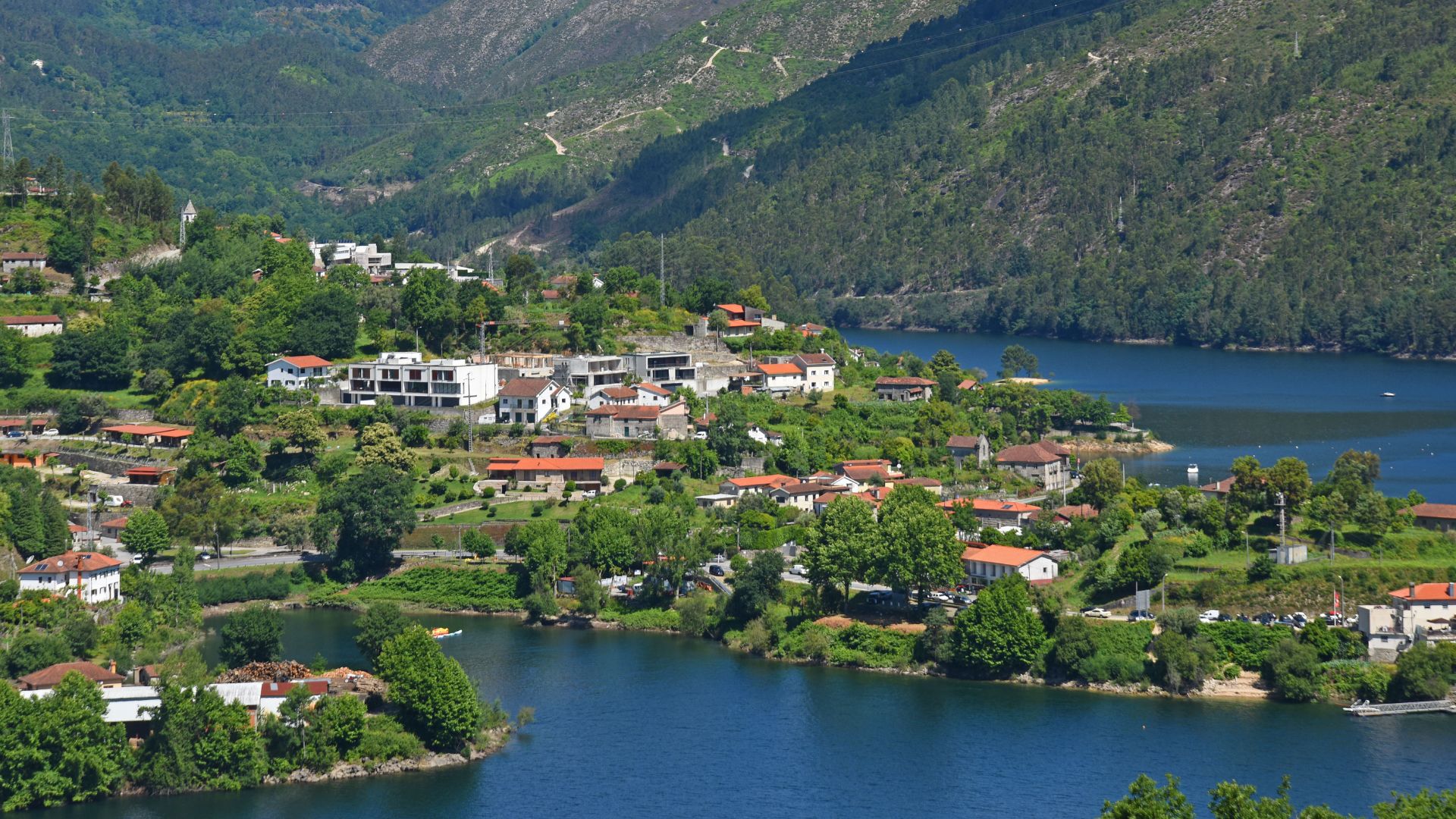
Guided Tours, Trekking Routes, and DIY Day Trips
I noticed both guided tours and DIY hikes are popular in Gerês. Guided treks offer history, wildlife spotting, and route planning—perfect if you’re new or just want some local insight.
I joined a small group tour, which made spotting wild garrano horses and learning about Roman milestones a breeze.
DIY day trips are easy to plan thanks to well-marked trails and helpful visitor centers in Vila do Gerês and Campo do Gerês. You can grab trekking maps, and most routes have signposts at key spots.
Booking a local guide has its perks, but going solo is totally possible—just bring a map or GPS. If you’re heading out alone, start early, pack plenty of water, and check the weather. Mountain mist and rain can show up fast!
Miradouro da Pedra Bela and Other Panoramic Viewpoints
I’ll never forget my first time at the Miradouro da Pedra Bela viewpoint. Sweeping valleys, sparkling lakes, endless peaks—it’s all laid out below you, making the park look wild and endless.
You can get there by car or a moderate hike—either way, it’s worth it. Other viewpoints, like Fraga Negra and Miradouro de Junceda, are just as stunning.
Some require a hike, others are easy stops on a road trip. If you get up early, these spots are peaceful and perfect for sunrise or sunset photos.
I often lingered, scanning the horizon for wild horses or distant waterfalls. Sometimes it’s impossible not to just stand there in awe.

Meeting Garrano Horses, Iberian Wolves, and the Park’s Unique Wildlife
Peneda-Gerês National Park bursts with rare animals, dramatic landscapes, and surprises around every corner. Ancient wild horses, elusive wolves, and majestic birds of prey all live in these mountains, turning every hike into a real adventure.
Spotting Garrano Wild Horses and Barrosã Cattle
Meeting Garrano horses up close felt like stepping into another era. These tough, shaggy horses have wandered the Peneda-Gerês mountains for ages.
I saw them in small herds above 700 meters, quietly grazing. They kept an eye on me, almost blending into the rocky slopes and oak woods.
Unlike domestic horses, Garranos pretty much fend for themselves. They live wild, adapting to the land around them.
Local guides shared that these horses sometimes cross paths with shepherds’ flocks and the occasional goat. Wolves, though, are their real competition up here.
I also ran into Barrosã cattle on the same trails. Their reddish coats and long, curved horns stood out right away.
Barrosã and the local Cachena breed help keep the meadows open. Their grazing shapes the heathlands, just like their ancestors did.
Tip: If you want to see wild Garranos, try early morning or just before dusk when they come out to feed.
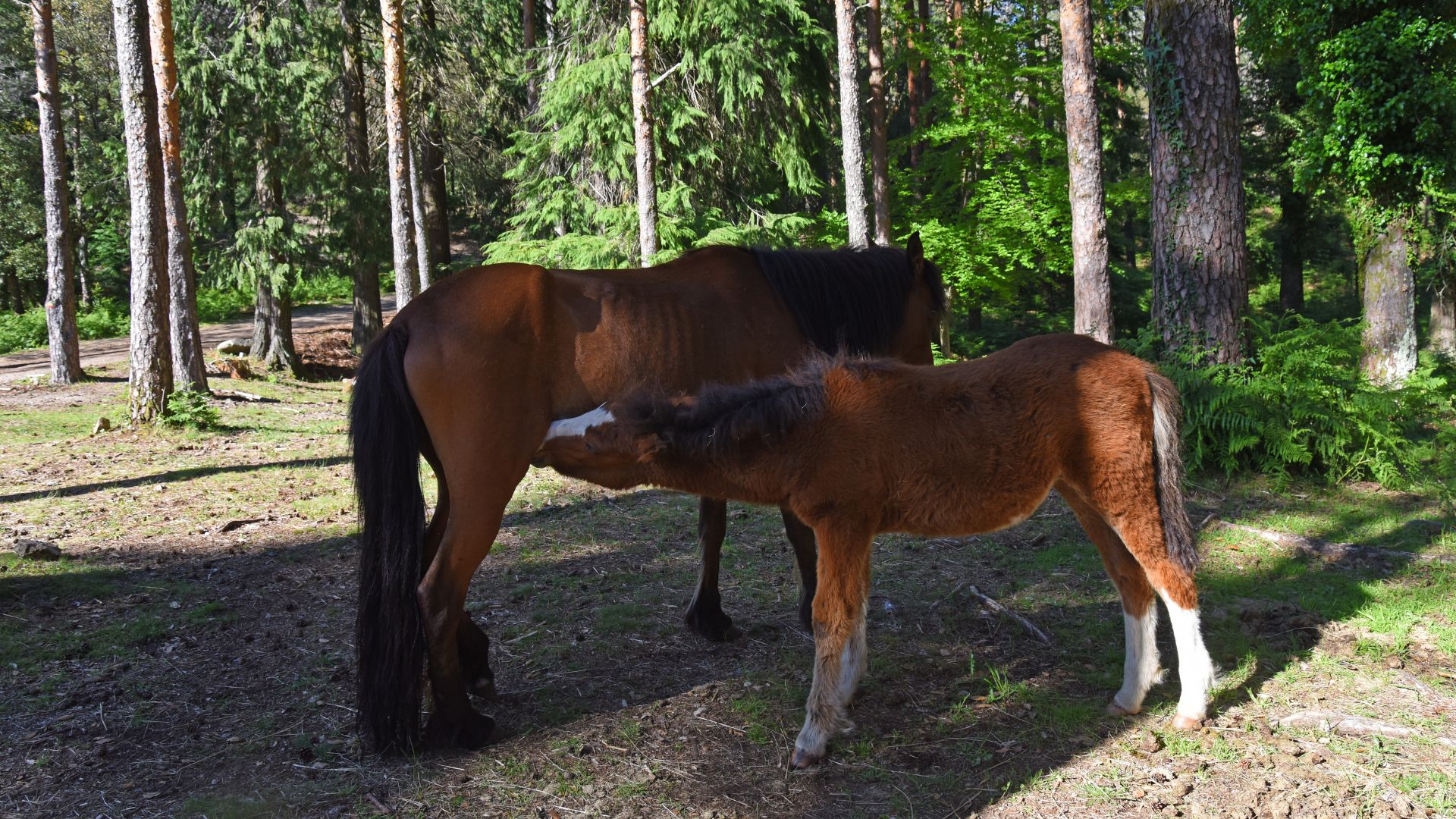
Birdwatching: Golden Eagles and More
Birdlife in Peneda-Gerês is just as remarkable as its mammals. I spent a good chunk of time with binoculars, hoping to catch golden eagles gliding overhead.
Their wings stretch wide, and they scan the hills like true rulers of the sky.
You’ll spot plenty of other birds, too. Cliffs and forests shelter peregrine falcons, black kites, and sometimes the elusive Eurasian eagle-owl.
My guide pointed out a group of choughs—black birds with bright red legs—hanging out on old rocks.
Bird Checklist:
| Bird | Where to See |
|---|---|
| Golden eagle | Rocky cliffs, peaks |
| Black kite | Open valleys |
| Peregrine falcon | Mountain ledges |
At dawn, I listened to bird calls echoing through the park. The place wakes up in little bursts of sound all around you.
Encountering Iberian Wolves, Roe Deer, and Spanish Ibex
Iberian wolves are the park’s most mysterious residents. I never saw one, but I did find tracks near old wolf traps that villagers built long ago.
Shepherds told me wolves still influence life here. They always worry about protecting their sheep and goats.
I spotted roe deer early one morning, nibbling on the forest undergrowth. Their big ears twitch at every sound, so I moved slowly to watch a small group slip across a clearing.
Up on the higher slopes, Spanish ibex sometimes show up. They balance easily on steep granite rocks, picking at tufts of grass in the chilly air.
Standing so close to wild animals in their world gave me chills. That raw connection to nature—maybe that’s what makes Peneda-Gerês so unforgettable.
Villages, Castles, and Culture: Human Stories Shaping the Landscape
Stone villages, old castles, and farming traditions tie people and nature together in Peneda-Gerês National Park. As I explored, I realized every path and stone had its own story.
Culture here feels like it grew straight out of the wild hills.
Historic Villages: Soajo, Lindoso, and Castro Laboreiro
When I wandered through Soajo, granite houses and twisty cobbled lanes surrounded me. The village is known for its cluster of stone espigueiros—granaries—lined up on a rocky ledge.
Each one stands on stilts, a clever trick to keep grain safe and dry.
Lindoso’s medieval fortress caught my eye, guarding the border with Spain. From the castle, you can see rolling hills and the River Lima.
The village itself feels timeless. Locals gather by fountains and tend gardens that have fed their families for generations.
Castro Laboreiro sits even higher in the mountains, close to Melgaço. It’s famous for stone shepherd houses and the ruined Castro Laboreiro Castle.
Climbing the steep path to the ruins, I could almost imagine the echoes of old battles and celebrations. Life here still follows the seasons, shaped by tradition.
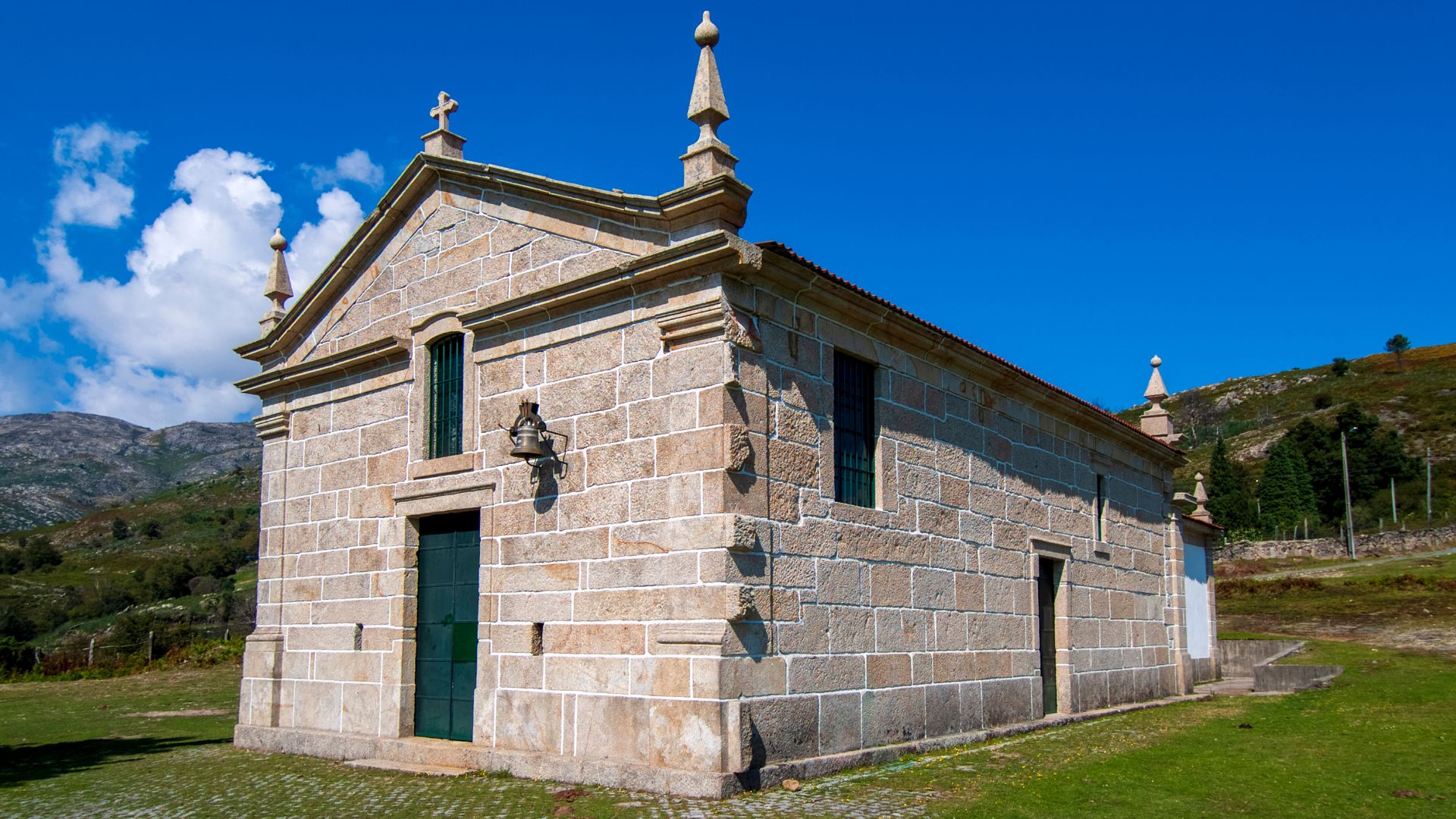
Sanctuary of Our Lady of Peneda and Medieval Castles
Tucked deep in the northern valleys, the Sanctuary of Our Lady of Peneda rises above the trees. Its white facade stands out after miles of winding roads.
I visited on a quiet afternoon, but in September, crowds gather for pilgrimages and festivals, filling the square with music and devotion.
Medieval castles dot the park. Lindoso Castle, built to defend the Spanish border, stands out.
Inside, lookout towers and thick stone walls hint at stories from the days of knights. The wind-battered ruins of Castro Laboreiro castle still watch over the hills.
These places mix faith, defense, and legend. They overlook villages like Arcos de Valdevez and Melgaço, reminders of how people once protected their land and celebrated their beliefs.
Espigueiros, Dolmens, and Rural Traditions
You’ll see espigueiros—raised stone granaries—all over the park, especially near Soajo and Lindoso. They look a little like tombs but actually store corn.
I found it fascinating that each family still uses their own espigueiro today.
Prehistoric dolmens—ancient stone burial mounds—hide along local trails near spots like Pitões das Júnias and Tourém. Some have signs, but others are tucked away in the brush.
These monuments quietly remind us that people have lived here for thousands of years.
Villages keep old traditions alive. They herd wild Garrano horses, tend communal gardens, and throw annual festivals.
Daily life still revolves around farming and sharing resources.
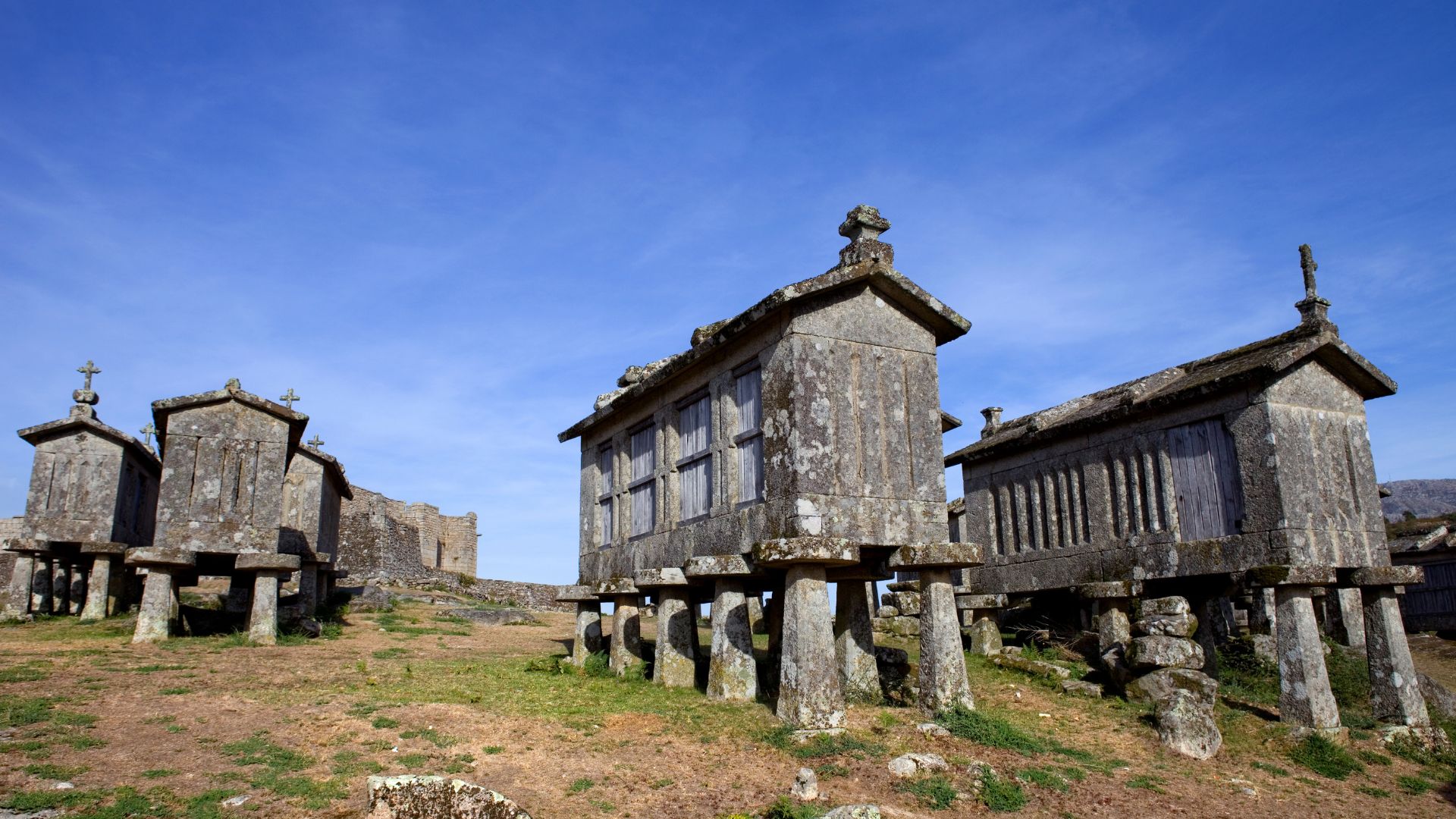
Gastronomy, Remote Mountain Communities, and Local Life
At a small restaurant in Terras de Bouro, I tried caldo verde (kale soup) and roast kid. The food was simple but packed with flavor—fresh herbs, mountain cheeses, and hearty meats.
Each meal felt like a piece of the region’s story.
In outlying villages like Ermida and Pitões das Júnias, I saw just how tough mountain life can get. Some places have only a few families left.
Their connection to the land runs deep. They grow vegetables, cure sausages, and host seasonal fairs.
Towns like Montalegre and Melgaço keep traditions going with craft markets and folk festivals. When I stayed at a local guesthouse, the hosts shared stories and homemade wine.
Life moves slower here, always tied to the land and old customs.

Planning Your Adventure: Where to Stay, How to Get There, and Essential Tips
Getting to Peneda-Gerês National Park takes a bit of planning. Picking the right place to stay matters almost as much as what you pack.
Taking time with these details made my trip smoother and honestly, a lot more fun.
Getting to Peneda-Gerês: By Car, Bus, or Public Transportation
Peneda-Gerês National Park sits in northern Portugal, about 100km from Porto and just over 30km from Braga.
I started in Porto, which worked well since I could rent a car easily. The drive took under two hours, and the mountain roads made the last stretch feel like an adventure.
By Car:
Driving is hands-down the easiest. Public buses barely reach into the park, and there’s no direct bus from Porto.
Google Maps led me right to villages like Gerês and Covide, where most trails begin. Parking is usually free, but it fills up fast on weekends.
By Bus/Public Transportation:
Buses do run from Braga and Viana do Castelo, but not often. Some routes need a transfer in Vila Real or a smaller town, which adds time.
If you want flexibility or plan to visit remote spots like Caniçada or Rio Caldo, you really need a car.
Where to Stay: Camping, Hotels, and Rural Accommodations
I didn’t expect so many options for staying overnight. I tried Gerês Camping—affordable, tucked in the trees, and basic but clean.
Waking up to birdsong was a treat.
Hotels and Guesthouses:
Towns like Gerês, Covide, and Rio Caldo have small hotels and B&Bs, mostly family-run. They fill up fast in summer.
If you’re after something cozier, rural cottages let you experience local life—homemade breakfasts, mountain views, and quiet nights.
Camping:
Camping is popular. The park has several official sites, usually with showers, electricity, and space for tents or small vans.
Wild camping isn’t allowed in protected areas. I met some travelers who booked their spots ahead, especially in busy months.
| Town | Accommodation Type | Highlights |
|---|---|---|
| Gerês | Hotels, Camping | Central, hiking trails access |
| Covide | Guesthouses, Rural homes | Quiet, rural, local charm |
| Rio Caldo | Camping, hotels | Lake views, water activities |
Packing Tips, Safety, and What to Expect
Packing light—but smart—made my trip so much easier. I tossed in sturdy trail shoes, a rain jacket (because, honestly, the weather flips fast), and a refillable water bottle.
Cell service dropped out in the deeper valleys. That got a bit frustrating at times.
Packing List Essentials:
- Waterproof jacket
- Hiking boots
- Sunscreen and bug spray
- Map or downloaded GPS trails
- First aid kit
Safety:
I found the trails well-marked most of the time. Still, I always told someone my plans, especially when hiking solo.
The park felt safe, but I didn’t wander off the official routes. Summer heat can get brutal, so I started my hikes early and packed plenty of water.
Many paths—like those old Roman roads—felt rocky and uneven underfoot. I bumped into garrano wild horses a couple of times. They’re gorgeous, but you really should keep your distance.
Most locals I met seemed friendly and happy to share tips about the best waterfalls or swim spots. The weather changes fast, so I’d say layers are a must.
